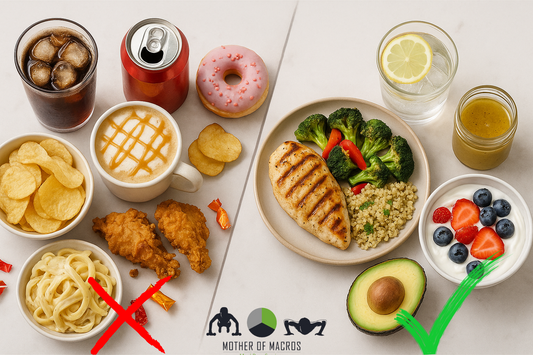Childhood obesity has become a pressing global health issue, with rates soaring in recent decades. This epidemic not only impacts a child's immediate well-being but also sets the stage for potential long-term health complications. According to the World Health Organization (WHO), the number of overweight or obese children under the age of five is estimated to be over 40 million worldwide. As such, it's crucial to understand the causes of child obesity and implement effective strategies to combat it.
Understanding the Causes
Several factors contribute to the rising prevalence of child obesity:
-
Unhealthy Diets: The consumption of high-calorie, low-nutrient foods such as fast food, sugary snacks, and sugary beverages has increased dramatically. These foods are often readily available, affordable, and heavily marketed to children. Clean Cheatz by Mother of Macros is a perfect alternative as we eliminate refined sugars but still keep the flavors!
-
Sedentary Lifestyle: With the proliferation of screens and digital devices, children are spending more time sitting and engaging in sedentary activities like watching TV, playing video games, or using smartphones, which reduces physical activity levels.
-
Environmental Influences: Factors such as lack of access to healthy foods, limited safe spaces for physical activity, and urban design that discourages walking or cycling contribute to a less healthy environment for children.
-
Family Dynamics: Family habits and behaviors, including eating patterns, meal choices, and activity levels, greatly influence a child's lifestyle and weight.
Combatting Child Obesity
Addressing child obesity requires a multifaceted approach involving individuals, families, communities, and policymakers. Here are some strategies to combat child obesity effectively:
-
Promote Healthy Eating: Encourage children to consume a balanced diet rich in fruits, vegetables, whole grains, lean proteins, and healthy fats. Limit the intake of sugary beverages, fast food, and processed snacks.
-
Encourage Physical Activity: Aim for at least 60 minutes of moderate to vigorous physical activity daily. Encourage activities that children enjoy, such as sports, dancing, swimming, or biking, to make exercise fun and sustainable.
-
Limit Screen Time: Set limits on screen time for recreational activities and encourage outdoor play or other active pursuits instead. Create screen-free zones during meals and before bedtime to promote healthier habits.
-
Educate Families: Provide education and resources to parents and caregivers on nutrition, meal planning, portion control, and the importance of physical activity. Empower families to make healthier choices together.
-
Create Supportive Environments: Advocate for policies and initiatives that promote access to affordable, nutritious foods and safe spaces for physical activity in schools, neighborhoods, and communities.
-
Lead by Example: Be a role model for healthy behaviors by adopting nutritious eating habits, staying physically active, and prioritizing overall wellness. Children often emulate the behaviors they see in adults.
-
Promote Body Positivity: Encourage a positive body image and self-esteem in children, focusing on health and well-being rather than weight or appearance alone. Avoid stigmatizing language or behaviors related to weight.
-
Collaborate Across Sectors: Foster collaboration among healthcare providers, educators, community organizations, policymakers, and industry stakeholders to develop comprehensive strategies and initiatives to combat child obesity.
The Road to a Healthier Future
Combatting child obesity is a complex and ongoing effort that requires commitment, collaboration, and sustained action at multiple levels. By promoting healthy lifestyles, fostering supportive environments, and empowering individuals and communities, we can work towards a healthier future for our children. Together, we can make a meaningful impact and help children thrive physically, mentally, and emotionally.




